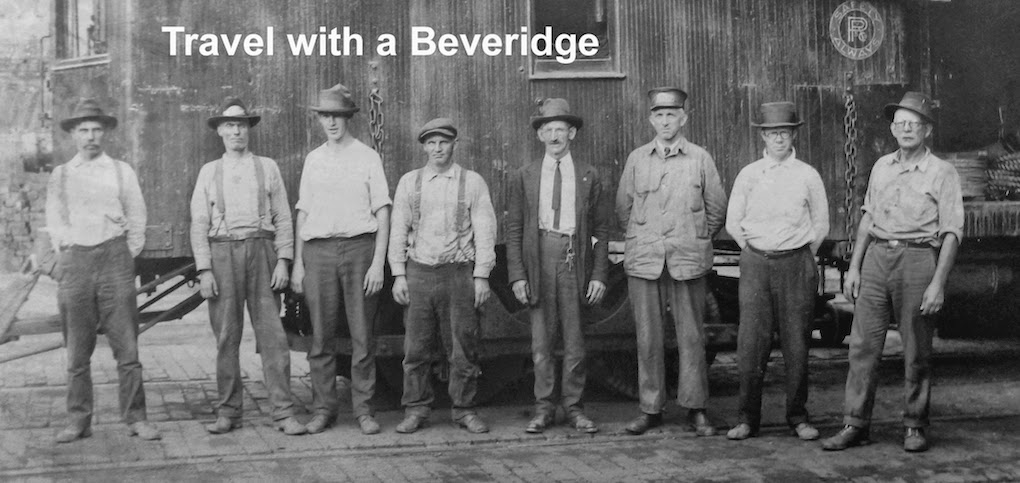
The folks who are immediately joined by the Donora-Webster Bridge in Pennsylvania are going to come up with something to celebrate its 100th birthday next month. Stay tuned. In the meantime, here is a story about its inspection this year reported by the Observer-Reporter in Washington, Pa.:
DONORA, Pa. – James Hibbs and his crew of four suspend themselves under the old steel bridge on a plank for an eight-hour shift, hooked to ropes and cables high above the Monongahela River.
They are inspecting the century-old Donora-Webster Bridge in Pennsylvania, using hammers to pick away rust and chipping gray paint to look for fractures in the metal.
"We take a picture of every little defect we find," said Hibbs, a subcontractor carrying out the work for the state Department of Transportation.
And these men are facing many challenges while going over this historic span, inch by inch, to help determine how much longer it'll be strong enough to bear the weight of cars.
Inspectors typically haul a supercrane onto bridges to carry out an inspection while safely standing in a moveable bucket at the end of the crane's arms.
But the tight, criss-crossing of steel that makes up the arches above the Donora-Webster's deck would get in the way of a supercrane. Worse yet, the bridge has a three-ton weight limit that makes it impossible to drive such a vehicle onto its deck.
"Anytime that you inspect a bridge that is this large and this complex, the size of the bridge itself makes it a time- consuming project," said Don Herbert, PennDOT's district bridge engineer.
The arches that span the river channel are the tallest, rising seven stories above the deck. Workers with good balance and nerves as strong as steel have to climb to their highest peaks during the inspection, with nothing more than a rope to hold onto.
In case of a fall, the company has to post a rescuer in a boat to circle the river under the bridge, 67 feet below the deck.
This bridge connecting Washington and Westmoreland counties must be inspected annually because of its age and lower deficiency rating. Regardless, it's been placed on the National Registry of Historic Places because of its age and style, but that distinction isn't enough to protect it from being demolished.
PennDOT wanted to demolish the span in the 1980s, but the plan changed after residents demanded that it be saved.
The place has a special significance to local residents, partly because it's been the site of three weddings, and another may be arranged this summer to mark its 100th birthday. Children also have been known to lull themselves to sleep at night by counting the hums each time a vehicle's tires roll across the open grating.
"Number one, it cuts down the travel time to Pittsburgh," said Dr. Charles Stacey of Donora, a retired school superintendent.
"The people from Webster who don't have all the ... facilities that Donora has can get over here," Stacey said, adding that people in his town use the bridge as a shortcut to Pittsburgh.
The day the bridge opened proved just how much these two towns wanted to replace the wooden ferryboat they were using to cross the river.
At least 15,000 people converged in the two communities on Dec. 5, 1908, to welcome the toll-free bridge across the Monongahela. They also came to attend the wedding of John Charles and Harriet S. Binley Whitherspoon of Webster.
The businesses of the tiny village catered the affair, preparing an ox roast and 4,000 buns for sandwiches. However, more than twice that many people were turned away when the food ran out.
"Those who were unable to get a sandwich, begged a bone and many went away gnawing at a hunk or rib," the Donora American newspaper reported at the time.
Donora was a boomtown because of a new U.S. Steel mill that opened here in 1901. By contrast, Webster was an aging farming and steamboat-building center that was quickly becoming overshadowed by its industrial neighbor.
But the bridge offered Donora quick and easy access to Webster's coalfieds, which supplied the fuel to heat the many new homes in the area.
As a tribute to both towns, the bridge was painted gray for the smoke created in Donora and black to symbolize Webster's coal.
PennDOT no longer uses black paint for bridges because the steel would fade into the night and increase the chances of vehicle accidents, Herbert said.
He declined to predict the life span of the bridge, and will await the findings of the week-long inspection before making any recommendations.
It could prove too costly to rehabilitate the bridge, and tearing it down and not building anew is always an option, Herbert said.
"I think that would be terrible," Stacey said, when confronted with the possibility of the bridge being eliminated from the landscape. "It would be a great mistake."
No decision, Herbert said, will be made without PennDOT first holding public hearings.



















